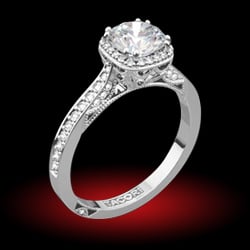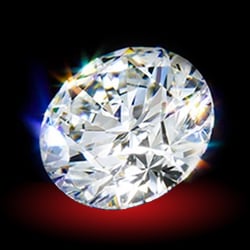About two month ago, I inquired about a ring I brought in Brussels--did I pay too much. Well I love the ring and you only go around once in life--as far as I know. I have travel a graet deal since then. I came back to this site because it is most educational. So this evening I pulled out the certificate I got on the ring and put the information into the Hollaway(spelling might be wrong) it rated a 4.8. It seems My diamond is not a good diamond after all, even though two jewlers in DC said it was a beautiful stone and setting. The certificate is from IGI and is dated 4/1980.Below is what it says:
Description Natural Diamond
Shape and cut Round Brilliant
Measurements 6.56-6.6 x 3.65 mm
Total depth Percentage 55.5%
Total Diameter Percentage 62%
Crown Height percentage 9.5%
Pavillion dept percentage 43%
Cutlet size pointed
Girdle Thickness Thin to medium( faceted)
Finsh good
Clarity grade (10x) VVS1
Color Grade E
Fluorence none
On the diagram there is only one small mark for an internal inclusion.
So if the stone is bad why does it cause people to comment on how beautiful it is. I shoud mention the stone looks best in indirectlight and at night.
I may not be wise but I have an eye for fine things. To me the ring is great--is it only that beauty is in the eye of the beholder--me?

Description Natural Diamond
Shape and cut Round Brilliant
Measurements 6.56-6.6 x 3.65 mm
Total depth Percentage 55.5%
Total Diameter Percentage 62%
Crown Height percentage 9.5%
Pavillion dept percentage 43%
Cutlet size pointed
Girdle Thickness Thin to medium( faceted)
Finsh good
Clarity grade (10x) VVS1
Color Grade E
Fluorence none
On the diagram there is only one small mark for an internal inclusion.
So if the stone is bad why does it cause people to comment on how beautiful it is. I shoud mention the stone looks best in indirectlight and at night.
I may not be wise but I have an eye for fine things. To me the ring is great--is it only that beauty is in the eye of the beholder--me?












300x240.png)